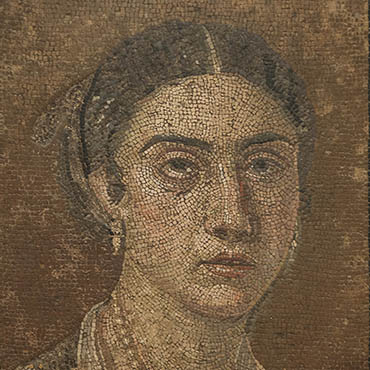15. Cosmetics

Artefacts, frescoes, and mosaics are testimony of the attention that was accorded in ancient Pompeii to physical appearances.
Women began to use makeup regularly beginning in the 1st century AD: including beauty masques and lipsticks. Ointments, balsams, salves, and perfumes were made from plant extracts mixed with vegetable oils or animal fats. One of the most sought-after perfumes was rose-scented.
In Pompeii, the fashionable women's hairstyle was parted down the middle, while adult men wore their hair short.
The Romans considered cosmetics a true art. Perfumes and lotions were prepared in special workshops. They were made from natural substances by technical specialists. Perfumes were stored in glass containers, which came in a wide variety of forms. The great trade in cosmetics is attested by the fact that in Rome during the second century BC the censors prohibited their sale and import.
Among women’s hairstyles was the often-fashionable chignon with a centre parting, while married women often adopted more complex hairstyles which were achieved with the use of combs, hairpins, and hairnets.
Public baths were devoted to the care of the body: they contained a dressing room with niches in the walls and stone benches, the frigidarium, which was the room with a cold water bath, the tepidarium, a transition room which served to avoid abrupt temperature changes, and the caldarium, where the hot bath was found. Joined to these spaces were rooms for gymnastics, and for oiling and cleaning the body after exercise.

